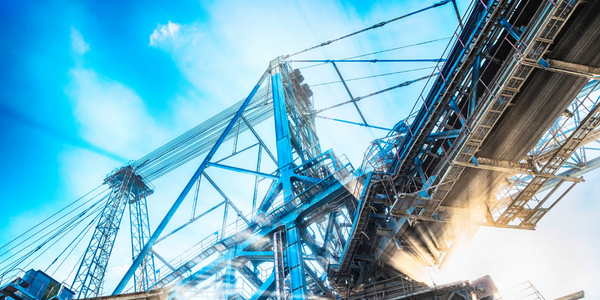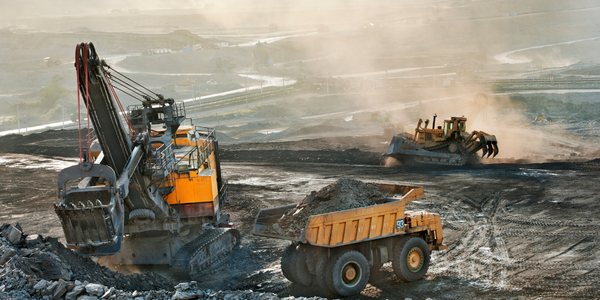公司规模
Large Corporate
地区
- Europe
国家
- United Kingdom
产品
- SPP Pumps
技术栈
- Jitterbit Harmony
- SAP
实施规模
- Enterprise-wide Deployment
影响指标
- Productivity Improvements
- Cost Savings
技术
- 基础设施即服务 (IaaS) - 云计算
适用行业
- 建筑与基础设施
- 矿业
适用功能
- 现场服务
- 维护
用例
- 远程资产管理
- 预测性维护
服务
- 云规划/设计/实施服务
关于客户
130 多年来,SPP Pumps 一直生产离心泵和泵送系统。它们已用于许多行业,包括采矿、建筑、消防、发电和废水处理。SPP 客户的应用通常非常苛刻。他们的泵通常在全球各地恶劣或极端的环境中运行。维修 SPP Pumps 销售的水泵、油泵和污水泵是这家位于英国雷丁的公司业务的重要组成部分。
挑战
SPP Pumps 拥有一套完全手动的流程,每天为 30 名现场工程师管理和安排 60 多个现场服务电话。现场生成发票的流程可能需要长达 14 天才能完成。服务工程师填写纸质表格、签名,然后将表格传真回总部,用于每次服务电话。然后,他们的管理人员必须手动将工单信息输入 SAP,然后才能生成发票。这种填写纸质表格的手动系统非常耗时,会导致许多错误,并给公司带来现金流问题。这种纸质系统还将服务工程师与销售团队和供应链隔离开来,阻碍了沟通。服务工程师经常会到达现场却没有带上正确的零件,或者在离开时无法向销售团队说明客户现场的潜在业务。
解决方案
一位顾问建议评估 Jitterbit Harmony,这是一个功能齐全的云集成平台,只需很少的代码或无需代码即可连接数据、应用程序和设备。使用 Harmony,像 SPP Pumps 这样的组织可以快速轻松地编排、自动化和桥接各种应用程序、业务流程和数据视图。Jitterbit Harmony 可以轻松集成系统,让您可以专注于自己最擅长的领域。经过仔细评估,SPP 决定采用 Jitterbit 作为其 SAP 集成的关键部分。结果是发票生成速度在 10 天内得到了改善。SPP Pump 的服务工程师现在可以远程输入他们的工作订单,并将数据实时输入 SAP 以立即计费。
运营影响
数量效益

Case Study missing?
Start adding your own!
Register with your work email and create a new case study profile for your business.
相关案例.

Case Study
IoT System for Tunnel Construction
The Zenitaka Corporation ('Zenitaka') has two major business areas: its architectural business focuses on structures such as government buildings, office buildings, and commercial facilities, while its civil engineering business is targeted at structures such as tunnels, bridges and dams. Within these areas, there presented two issues that have always persisted in regard to the construction of mountain tunnels. These issues are 'improving safety" and "reducing energy consumption". Mountain tunnels construction requires a massive amount of electricity. This is because there are many kinds of electrical equipment being used day and night, including construction machinery, construction lighting, and ventilating fan. Despite this, the amount of power consumption is generally not tightly managed. In many cases, the exact amount of power consumption is only ascertained when the bill from the power company becomes available. Sometimes, corporations install demand-monitoring equipment to help curb the maximum power demanded. However, even in these cases, the devices only allow the total volume of power consumption to be ascertained, or they may issue warnings to prevent the contracted volume of power from being exceeded. In order to tackle the issue of reducing power consumption, it was first necessary to obtain an accurate breakdown of how much power was being used in each particular area. In other words, we needed to be able to visualize the amount of power being consumed. Safety, was also not being managed very rigorously. Even now, tunnel construction sites often use a 'name label' system for managing entry into the work site. Specifically, red labels with white reverse sides that bear the workers' names on both sides are displayed at the tunnel work site entrance. The workers themselves then flip the name label to the appropriate side when entering or exiting from the work site to indicate whether or not they are working inside the tunnel at any given time. If a worker forgets to flip his or her name label when entering or exiting from the tunnel, management cannot be performed effectively. In order to tackle the challenges mentioned above, Zenitaka decided to build a system that could improve the safety of tunnel construction as well as reduce the amount of power consumed. In other words, this new system would facilitate a clear picture of which workers were working in each location at the mountain tunnel construction site, as well as which processes were being carried out at those respective locations at any given time. The system would maintain the safety of all workers while also carefully controlling the electrical equipment to reduce unnecessary power consumption. Having decided on the concept, our next concern was whether there existed any kind of robust hardware that would not break down at the construction work site, that could move freely in response to changes in the working environment, and that could accurately detect workers and vehicles using radio frequency identification (RFID). Given that this system would involve many components that were new to Zenitaka, we decided to enlist the cooperation of E.I.Sol Co., Ltd. ('E.I.Sol') as our joint development partner, as they had provided us with a highly practical proposal.

Case Study
Splunk Partnership Ties Together Big Data & IoT Services
Splunk was faced with the need to meet emerging customer demands for interfacing IoT projects to its suite of services. The company required an IoT partner that would be able to easily and quickly integrate with its Splunk Enterprise platform, rather than allocating development resources and time to building out an IoT interface and application platform.

Case Study
Bridge monitoring in Hamburg Port
Kattwyk Bridge is used for both rail and road transport, and it has played an important role in the Port of Hamburg since 1973. However, the increasing pressure from traffic requires a monitoring solution. The goal of the project is to assess in real-time the bridge's status and dynamic responses to traffic and lift processes.

Case Study
Underground Mining Safety
The goal was to produce a safety system to monitor and support underground mining operations; existing systems were either too simple (i.e. phone line) or overly complex and expensive, inhibiting deployment, and providing little-to-no support in event of an accident. Given the dangerous nature of the mining work environment and the strict regulations placed on the industry, the solution would have to comply with Mine Safety and Health Administration (MSHA) regulations. Yet the product needed to allow for simple deployment to truly be a groundbreaking solution - increasing miner safety and changing daily operations for the better.

Case Study
Mining Firm Quadruples Production, with Internet of Everything
Dundee Precious Metal’s flagship mine, in Chelopech, Bulgaria, produces a gold, copper, and silver concentrate set a goal to increase production by 30%. Dundee wanted to increase production quality and output without increasing headcount and resources, improve miner safety, and minimize cost.

Case Study
Fastenal Builds the Future of Manufacturing with MachineMetrics
Fastenal's objective was to better understand their machine downtime, utilization, quality issues, and to embrace cutting-edge manufacturing technology/process improvement capabilities to bring their team to the next level. However, there was a lack of real-time data, visualization, and actionable insights made this transition impossible.



